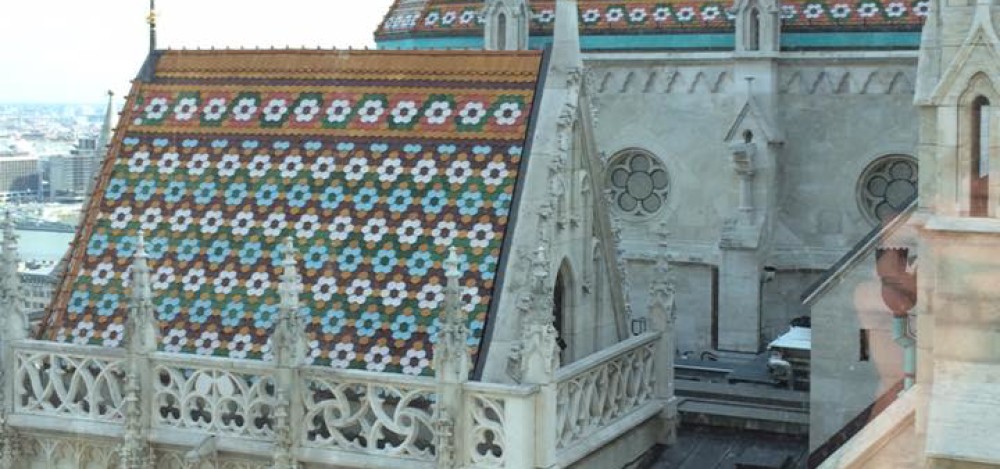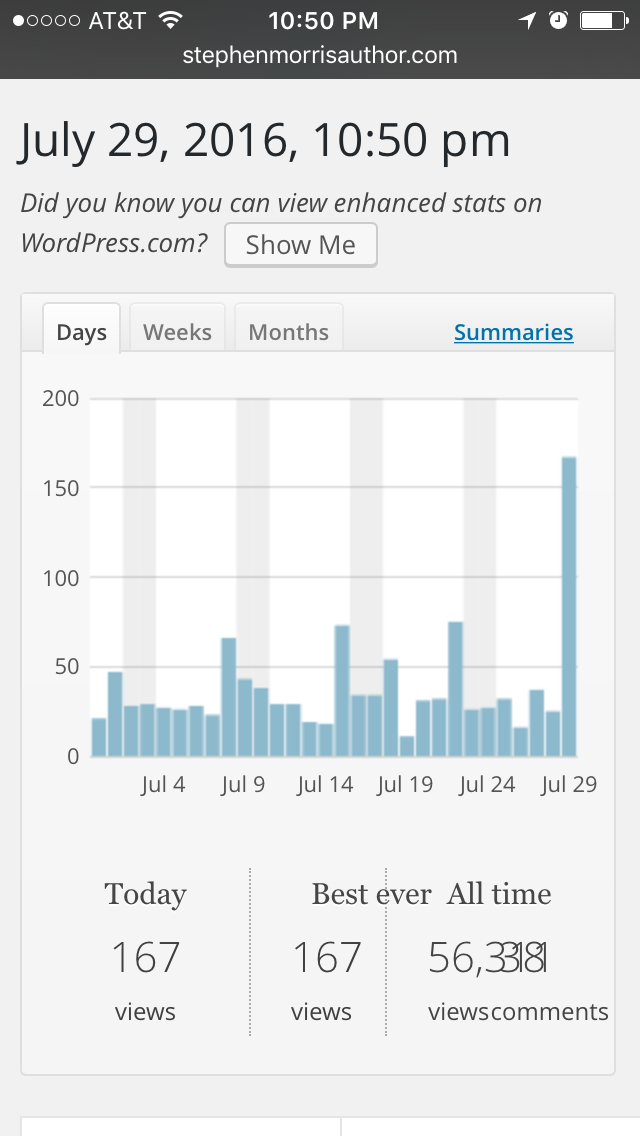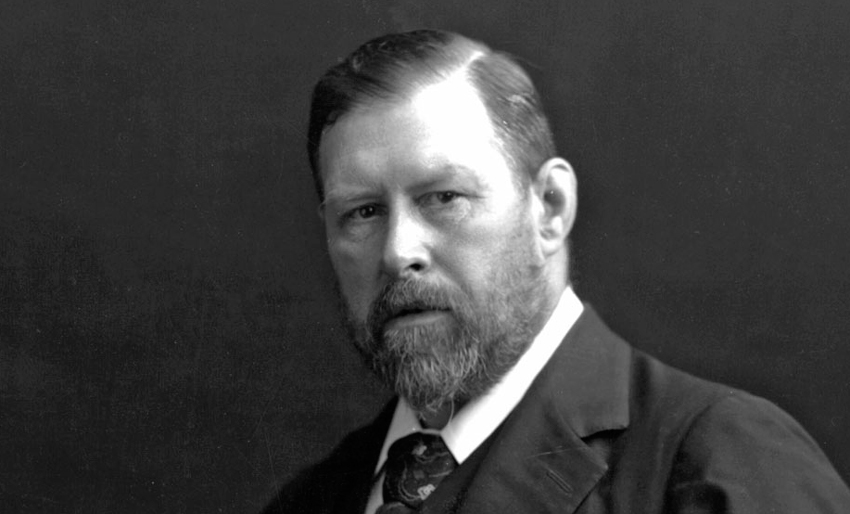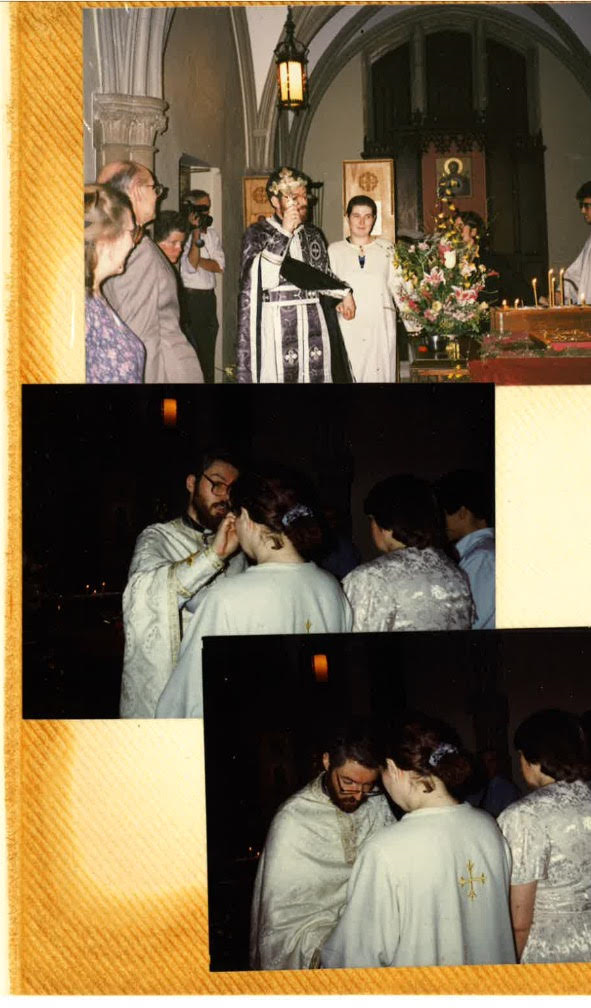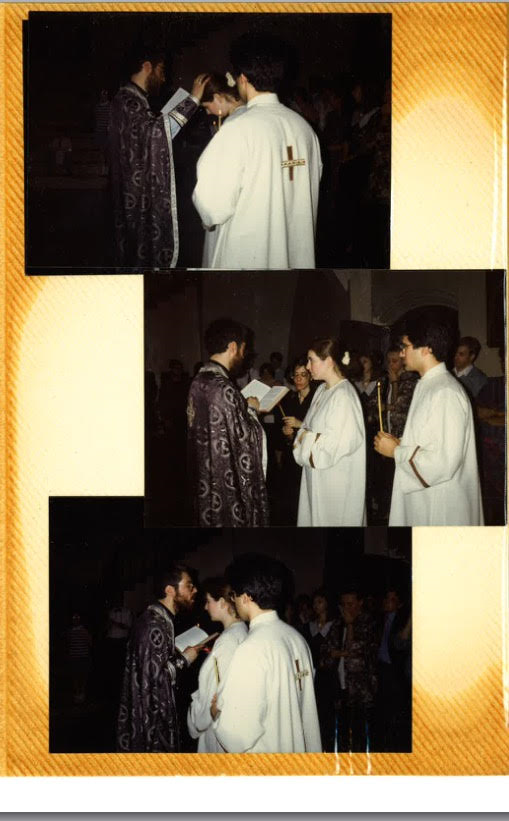It’s always a surprise to me which posts become SO popular. Writers never know what words or stories will strike their readers in a certain way, grabbing them by the lapels and demanding to be read. Of course, as a writer I hope that ALL my words will grab readers attention that way but experience proves otherwise. Some words grab some readers. Other words grab other readers. The important thing is that words and stories each be read and that each reader find their favorites. Often a writer never knows which words or stories grab which readers in particular; people share or trade copies of books and so sales is often a poor indicator of what readers find especially compelling or attractive.
One way of writing that is easy to measure it’s popularity are blog posts. Posts are tracked by the cyber-spirits that dwell in “the Cloud” and it is very difficult to trick these cyber-guardians who stand there with clickers in their hands, tabulating how many people click on links or pause a minute to look at a webpage. “Top Post” is a category that every post wants to inhabit but which only a very few are lucky enough to achieve. My most recent Top Blog post was the post in which I shared my thoughts on From Faith to Fantasy and discussed how having served as a priest has shaped my writing. The previous most popular posts were those about Lammas Day and about Frankincense.
Another post that has been consistently popular, often getting 50+ views per day, is the post about Storm Wolf. Although it has not been read as many times in one day as From Faith to Fantasy or Lammas Day or Frankincense, it has been very popular for several weeks in a row.
More top billing? My appearance on Hannah Kate’s public radio show in Manchester, UK is among the Top 30 downloads of programs on Mixcloud! You can listen to the show–in which I discuss writing, Prague, the Evil Conferences, and more–on Hannah Kate’s page.
You can also hear me pontificate about a cult classic made-for-tv horror film on the newest episode of the Scream Queenz podcast. If you haven’t seen the movie–or saw it years ago and have forgotten details–you can read my post about Crowhaven Farm and click on the link to the movie itself.
And don’t forget the podcast of my 2014 interview with Radio Prague!
